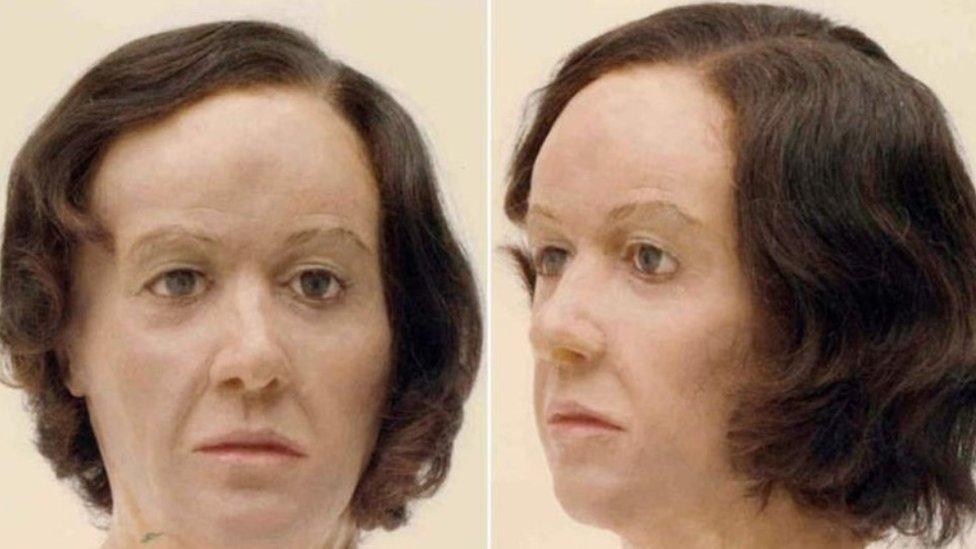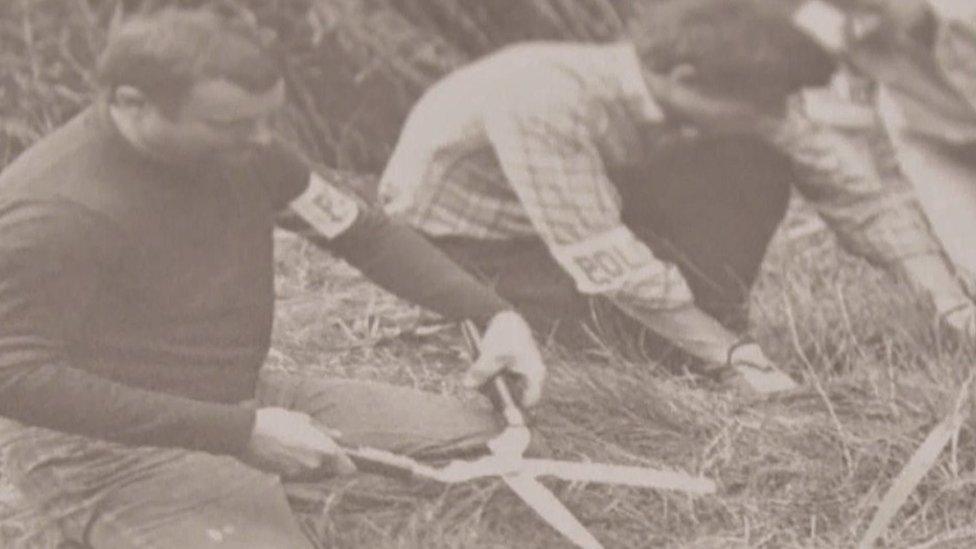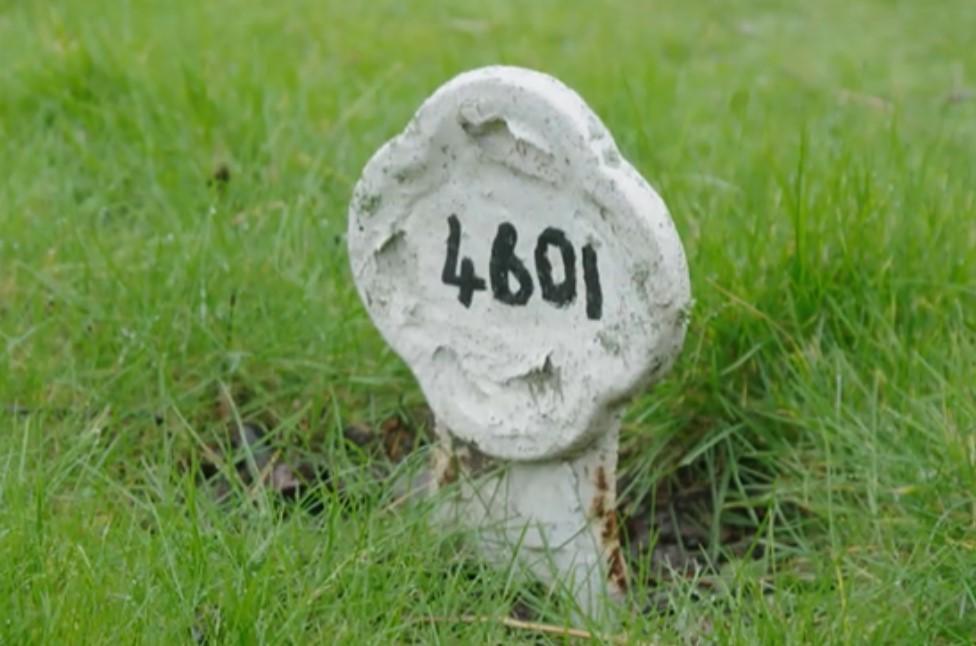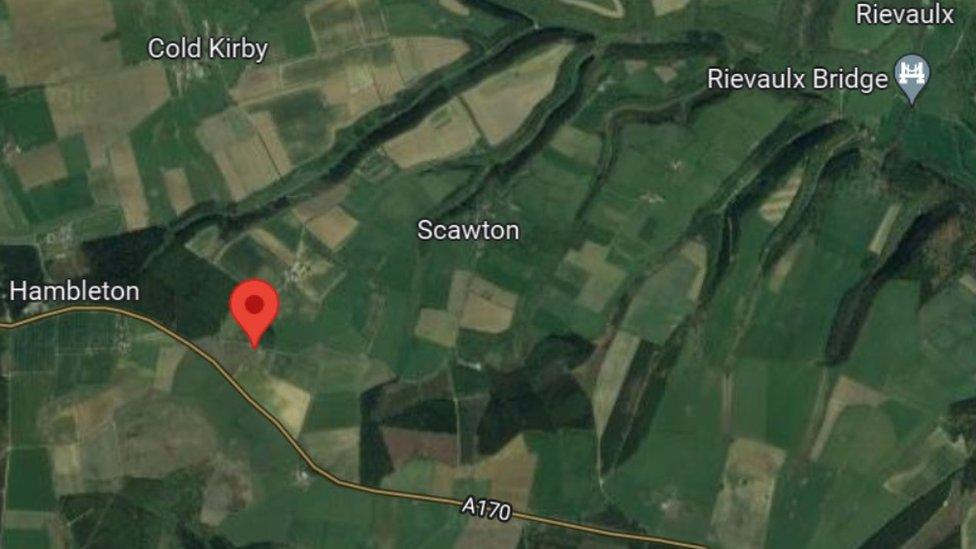Sutton Bank death: Police hope to solve 40-year mystery
- Published

A wax model of the woman's face was sculpted at the time of investigations in the 1980s and depicts how she may have looked
The mystery of an unknown woman whose naked body was found by the side of a road more than 40 years ago is being reinvestigated by cold case detectives.
An anonymous phone call to police in North Yorkshire in August 1981 led officers to discover the woman's remains in undergrowth at Sutton Bank.
Despite extensive inquiries at the time, and in the years that followed, she has remained unidentified.
Police now believe gaps in someone's family tree could produce fresh leads.
The woman's decomposed body was discovered to one side of the A170 Thirsk to Scarborough road after the anonymous tip-off, during which the caller refused to give his name citing "security reasons".
Although she was found in 1981, the state of decomposition indicated it was likely she had been there since 1979, police said.

Extensive investigations were carried out at the time of the discovery of the woman's body but proved fruitless
A yoghurt pot found under her body dated from 1979 and analysis showed vegetation which had grown up between her bones had been present for at least one botanical year.
At the time of the investigation, a wax model of the woman's face was sculpted, based on skeletal evidence.
Members of the cold case team believe that is still a reasonably accurate depiction of what she would have looked like.
'Enduring mystery'
While officers have suspected foul play, there has never been enough evidence to officially categorise it as a murder inquiry.
The case was re-investigated in 2012, with hopes of a possible breakthrough into the woman's identity.

The woman's body was exhumed from an unmarked grave in 2012 and her case was reinvestigated
Her body was exhumed from an unmarked grave to gather new DNA evidence and the profile was compared to samples of families who could potentially be related to the woman.
However, no match was found.
Adam Harland, head of North Yorkshire Police's Cold Case Review Team, said it was "one of the most enduring mysteries" he had worked on.
"It's highly unusual for someone who has died in these circumstances to remain unidentified for decades.
"Despite the passage of time, nobody deserves to be simply forgotten about - this was someone's mother," Mr Harland said.
Spine malformation
Police believe the woman was born between 1935 and 1940, making her between 39 and 44 years old when she died.
A post-mortem examination at the time of the discovery of her body showed she had given birth two or three times. In 2022, those children would now be in their 60s.

The woman's body was discovered to one side of the A170 Thirsk to Scarborough road
The woman was white, had brown hair, was around 5ft 4ins (1.6m) tall, had size four feet and had an upper spine malformation meaning she could have held her head at an unusual angle.
Police said she had several missing teeth and evidence of a lifestyle involving regular smoking and drinking.
Mr Harland said past investigations by police into the woman's identity had been thorough, but advances in science and forensics since the 1980s had put them in a more favourable position.
"If names are put forward we can now apply this information to our DNA forensic records for this lady.
"People's lives and allegiances move on and time can tease out information that has been closely guarded in the past," he said.
The former detective said someone who had researched their family tree and had come across a gap, or a relative who had simply disappeared, might give officers new clues.
Mr Harland said: "Police forces have used similar techniques for cold case investigations in the past. While they may seem unconventional, they can provide the missing piece to the jigsaw."
The priority was to first identify the woman and then consider how her body ended up in the undergrowth, he added.
"I'd rather 200 names were put to us and 199 were wrong, than nothing to work from at all.
"That one piece of information could be all we need now to solve a decades-old mystery."

Follow BBC Yorkshire on Facebook, external, Twitter, external and Instagram, external. Send your story ideas to yorkslincs.news@bbc.co.uk, external.